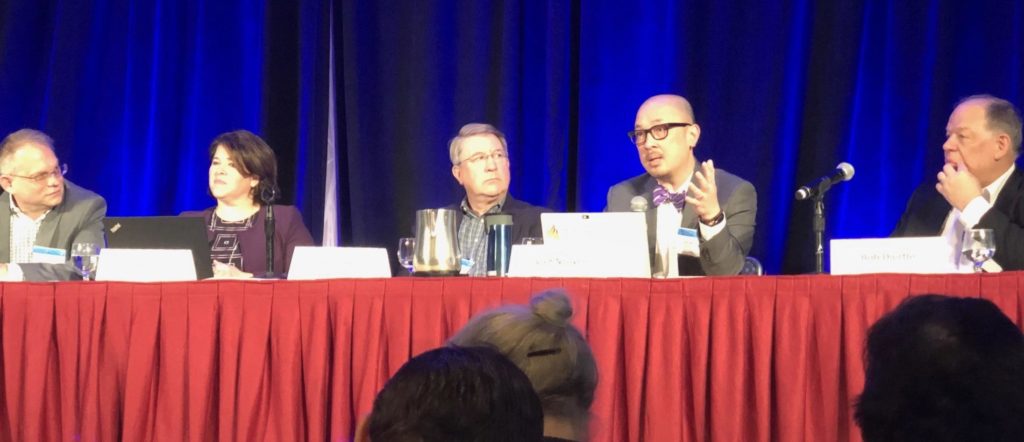By Jocelyn Keegan, Payer Practice Lead
 ONC Annual Meeting 2018 Panel: Bridging the Payer - Provider Data Divide: The P2 FHIR Taskforce & HL7 Da Vinci Project
ONC Annual Meeting 2018 Panel: Bridging the Payer - Provider Data Divide: The P2 FHIR Taskforce & HL7 Da Vinci Project
Recently, I had the opportunity to attend and speak at the annual meeting of the Office of the National Coordinator for Health Information Technology (ONC). Throughout the meeting and during my P2 FHIR Taskforce & HL7 Da Vinci Project panel session, it was clear and exciting to see that payers, providers and other stakeholders are coming together to promote the use of HL7’s FHIR (Fast Healthcare Interoperability Resources) standard. FHIR is uniquely positioned to bridge interoperability gaps across the many disparate systems used today to exchange clinical and administrative data among payers and providers and providers and providers. It also shows promise for facilitating data exchange for value-based care and data access for clinicians, payers and patients.
Here’s a summary of the focus areas of the two complementary initiatives that are aimed at using FHIR to address stakeholder needs and resolve interoperability barriers:
- P2 FHIR Task Force. The Task Force was convened by ONC at the urging of industry leaders to explore how FHIR can be used at scale to improve clinical data exchange between payers and providers (P2) in support of population health, value-based care, and improved care quality. Using a Tiger Team approach, the group is identifying challenges and proposing potential solutions to infrastructure/ecosystem barriers for FHIR adoption. The Task Force also will work to establish FHIR ecosystem standards and best practices, which will allow solutions to scale nationally.
- Da Vinci Project. Da Vinci is a multi-stakeholder, private-sector initiative aimed at using FHIR to solve payer-provider and provider-provider interoperability problems related to value-based care. The group is focused on targeted use cases that can power the necessary data exchange required to accelerate value-based care.
Why are these initiatives important? Da Vinci and P2 are important for three reasons.
First, they are important for spearheading discrete efforts to resolve data exchange problems and getting results through a multi-stakeholder process.
Secondly, the two initiatives show how the industry can come together to identify and solve interoperability problems—on both a small focused area and national scale. The dual challenges of data standardization and easy information access must be addressed if payers and providers are to create efficient care delivery solutions and effective care management models.
Finally, the initiatives fit within administration efforts to improve interoperability and promote the development and adoption of standards. The administration’s emphasis on industry driven activities to achieve those priorities is underscored in a newly released draft report, Strategy on Reducing Regulatory and Administrative Burden Relating to the Use of Health IT and EHRs. The use of FHIR-based applications is featured prominently as a way to reduce the burden associated with prior authorization. Public comment is being sought; the deadline for comment submission is 11:59 p.m. E.T. on January 28, 2019. Comments must be submitted electronically at https://www.healthit.gov/topic/usability-and-provider-burden/strategy-reducing-burden-relating-use-health-it-and-ehrs.
For latest information on the P2 FHIR Taskforce, please visit the official project page. Interested in learning more or potentially supporting the work of the Task Force, such as volunteering to work on a tiger team? Please visit the tiger teams main page and submit the interest form to see if space is available.
Want to learn more about the Da Vinci Project? Please reach out to me as Da Vinci program manager at Jocelyn.keegan@pocp.com




